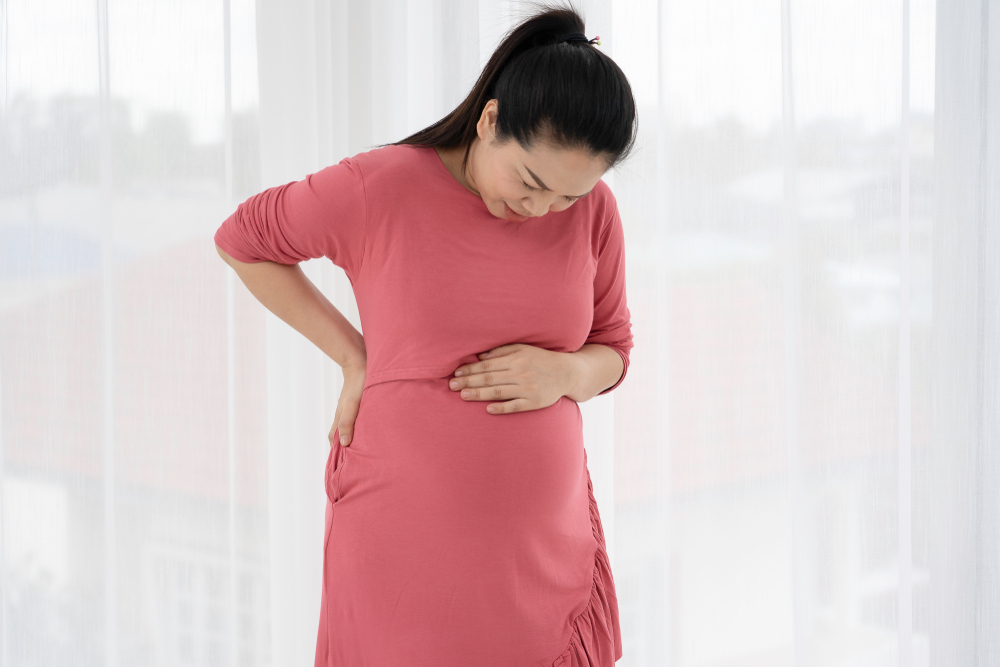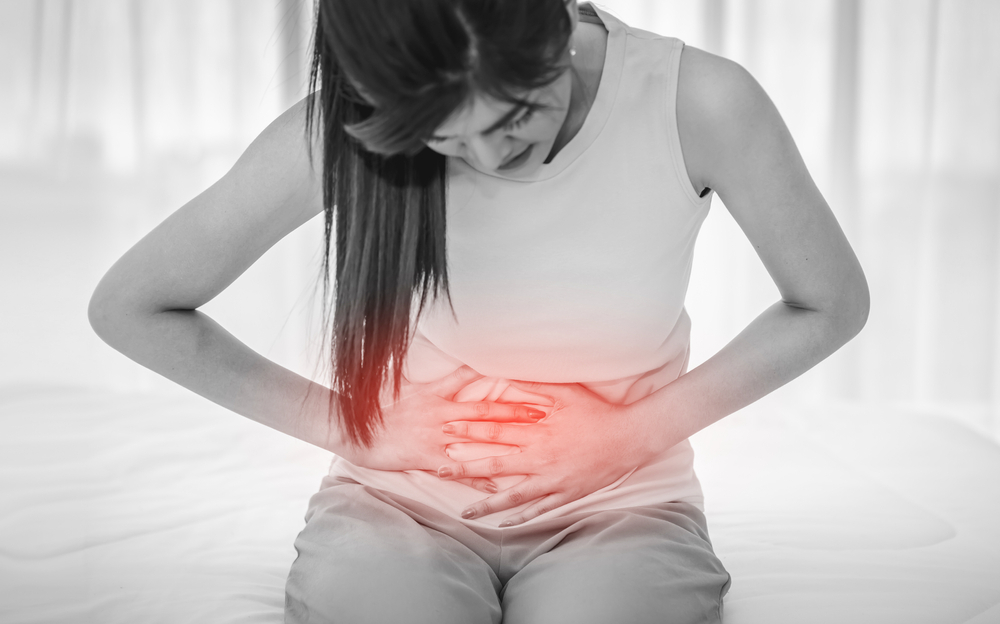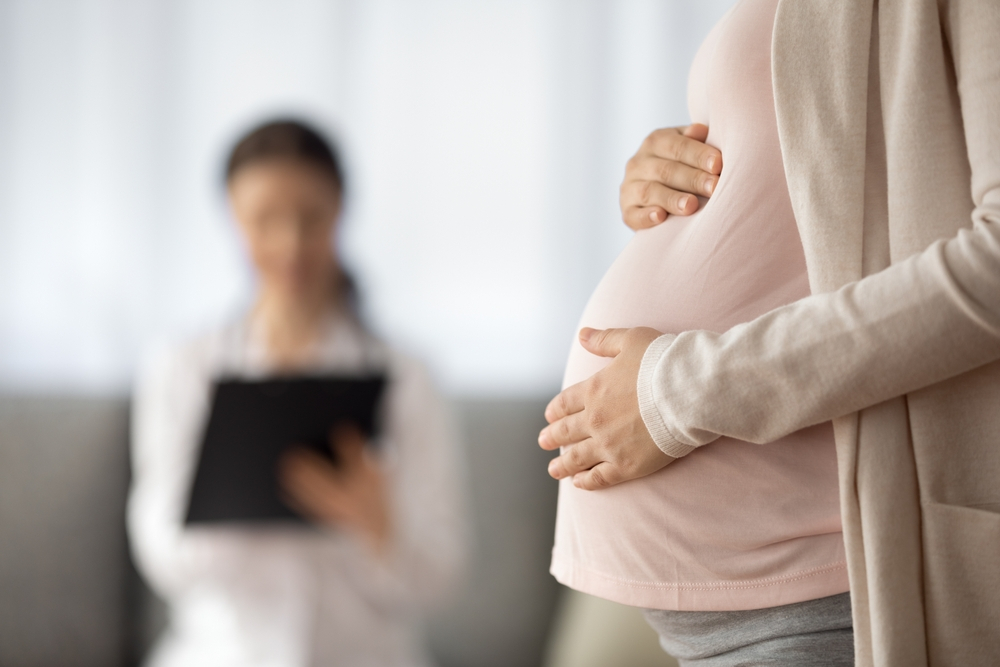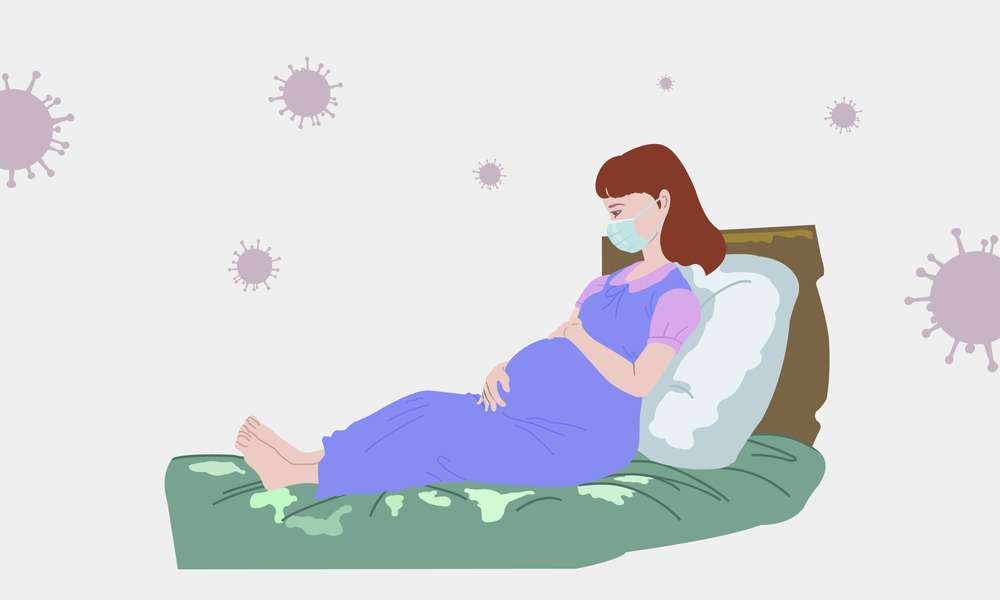Pelvic Pain during Pregnancy
Pelvic pain during pregnancy is a common complaint with a variety of underlying causes. It’s important to remember that your body changes to accommodate the growing baby, so experiencing some degree of pelvic discomfort is normal. To rule out any underlying problems, you should speak with your healthcare provider about any severe or ongoing pain. These are a few typical reasons why pregnant women experience pelvic pain:

- Pain from Round Ligaments: When the uterus grows, the round ligaments that support it may stretch and become painful. This lower abdominal pain can be felt on one or both sides and is frequently sharp. The uterus and pelvis are joined by two circular ligaments. Your uterus grows out of your pelvis, and the ligaments in it pull, stretch, and thicken to support and accommodate it. Pain during these shifts usually subsides in a matter of seconds as you shift positions. Though it occasionally shoots down the inside of your thigh, this pain is primarily felt in your groin, where your abdomen meets your legs.
- Symphysis Pubis Dysfunction (SPD): Pubis Dysfunction in Symphysis (SPD) The joint directly beneath the area where your pubic hair grows at the front where the two sides of the pelvis meet is called the pubic symphysis. The network of ligaments supporting it relaxes, causing excessive joint movement and a range of pain levels, from moderate to severe. This disorder is brought on by excessive movement of the joint that joins the two halves of the pelvis, the pubic symphysis. It may result in pain in the inner thighs, groin, and pelvic region.
- Increased Pressure on Pelvic Organs: The pelvic organs may experience discomfort as a result of pressure from the expanding uterus. The pelvic area may hurt or feel heavy as a result of this pressure.
- One kind of exercise contraction that might cause minor lower abdominal pain is the Braxton Hicks contraction. They typically don’t result in labor and are erratic.
- Constipation and Gas: During pregnancy, hormonal changes can cause digestion to slow down, which can result in constipation and gas. This may result in pelvic discomfort and bloating.
- Urinary Tract Infections (UTIs): Pelvic pain during pregnancy may be brought on by UTIs. In order to avoid complications during pregnancy, it is imperative to treat UTIs as soon as possible.
- Ectopic Pregnancy: Pelvic pain during pregnancy occasionally signals a more serious ailment such as an ectopic pregnancy, in which the fertilized egg implants extrauterinely. This may be a medical emergency that needs to be attended to right away.
- Pelvic Inflammatory Disease (PID): Although less frequent, PID can result in pregnancy-related pelvic pain during pregnancy. It is an infection of the reproductive organs in women, and medical attention is needed.
- Pubis Symphysis Diastasis (DSP) When the gap in the pubic symphysis widens excessively, this condition develops. During pregnancy, the joint typically widens by two to three millimeters to facilitate the baby’s passage through your pelvis. The pubic symphysis widens to the point of instability in certain women.
- Pain in the sacroiliac joint. Ligaments found in the sacroiliac joints join the sacrum, which is made up of the final five vertebrae in your spine, to the “wings” of the pelvis on either side. The bones in this region may move if these ligaments relax excessively, applying pressure to the surrounding muscles and nerves. One side of your pelvis might sting more than the other assuming you have sacroiliac joint agony.The back or front of your thighs may experience pain as it travels down your legs. Alternatively, you might experience both excruciating low back pain and an unsteady sensation in your pelvic bones.
Experts surmise that a multitude of variables associated with typical pregnancy changes are the root cause of pelvic pain, also referred to as pelvic girdle pain. The growing placenta releases more relaxin, a hormone, as early as 10 weeks into pregnancy. his chemical loosens up your tendons, including the ones that keep your pelvic bones intact, as its name proposes. This works with the section of your child’s head through the opening during conveyance.
Pregnancy-related increases in progesterone and estrogen levels may also have a loosening effect. In the event that casual tendons stretch excessively far or grant the bones they are backing to move too openly, it can cause torment. These bones might move and pack encompassing muscles, bringing about torment. Pelvic pain during pregnancy can also be caused by weight gain and a shift in your center of gravity. Your pelvis is forced forward and your lower back’s curve deepens as your belly expands.The tendons and muscles in and around the pelvis may become overworked as a result. Actually, there’s often a connection between pelvic and lower back pain.

Sharp pelvic pain during pregnancy third trimester
Sharp pelvic pain during the third trimester of pregnancy can be worrisome, and you should speak with your doctor to find out why and to make sure you and your unborn child are safe. Sharp pelvic pain during the third trimester may be caused by a number of factors:
- Pregnancy is frequently associated with round ligament pain, particularly in the third trimester. When the round ligaments stretch, it can hurt like a sharp, stabbing pain and support the uterus.
- The pelvic region becomes painful as a result of this condition, which causes the ligaments supporting the pelvis to stretch and soften. In the third trimester, it is more prevalent.
- Mild, irregular contractions that can cause discomfort or constriction in the lower abdomen are the most common description of Braxton Hicks contractions. In certain instances, they might be more noticeable and produce intense pain.
- Baby’s Position: If the baby’s head is positioned inside the pelvis, it may occasionally cause sharp pains.
- Pelvic Floor Strain: The growing baby’s increased pressure on the pelvic floor can cause strain and discomfort.
- Increased Weight and Pressure: As a baby grows, the pelvic area experiences an increase in weight and pressure, which may cause discomfort.
- Pelvic pain during pregnancy may be caused by urinary tract infections (UTIs) or other infections. It is crucial to rule out these possibilities through a thorough medical evaluation.
- Preterm Labor or Signs of Labor: Severe or severe pelvic pain may indicate preterm labor or other labor-related complications. It’s critical to keep an eye out for additional labor indicators, such as consistent contractions, back pain, or changes in the vaginal discharge.
It is imperative that you get in touch with your healthcare provider right away if you feel severe pelvic pain in the third trimester. To find the source of your pain, they might want to perform an ultrasound, physical examination, or other diagnostic procedures on you. It is especially important to get evaluated right away if the pain is severe, chronic, or accompanied by other worrisome symptoms.
Keep in mind that every pregnancy is different, and that discomfort that one person may consider normal may cause concern for another. Always follow your instincts and consult a doctor if you are unsure or worried about your health or the health of your unborn child during pregnancy.
How to relieve pelvic pain during pregnancy?
Pregnancy-related pelvic painis frequently treated with a mix of exercise, lifestyle changes, and occasionally pharmaceutical treatments. The following techniques could be useful in reducing pelvic pain during pregnancy:
- Exercises for the Pelvic Floor: Increasing the strength of your pelvic floor muscles can help support your pelvis. Exercises like Kegels are frequently used to target these muscles. For advice on how to do them correctly, speak with a physiotherapist or your healthcare provider.
- Keep Good Posture: Be mindful of your posture, particularly when standing or sitting for extended periods of time. To support your lower back, use supportive chairs and think about using a tiny pillow or cushion.
- Pregnancy-related pelvic pain is frequently treated with a mix of exercise, lifestyle changes, and occasionally pharmaceutical treatments. The following techniques could be useful in reducing pelvic pain during pregnancy.
- Exercises for the Pelvic Floor: Increasing the strength of your pelvic floor muscles can help support your pelvis. Exercises like Kegels are frequently used to target these muscles. For advice on how to do them correctly, speak with a physiotherapist or your healthcare provider.
- Keep Good Posture: Be mindful of your posture, particularly when standing or sitting for extended periods of time. To support your lower back, use supportive chairs and think about using a tiny pillow or cushion.
Avoid Extended Sitting or Standing: Take frequent breaks to move around and adjust your posture. If your work requires you to sit for extended periods of time, think about supporting your lower back with a cushion or a tiny pillow. - Swimming: During pregnancy, pelvic pain can be effectively relieved by swimming, an activity with minimal impact. The water’s buoyancy lessens the force on your joints.
Massage: Tense muscles can be relaxed and pelvic pain can be reduced with gentle massages from a licensed prenatal massage therapist. - Over-the-Counter Pain Relief: You might be able to treat mild pain with over-the-counter medications like acetaminophen if your doctor gives the go-ahead.Nevertheless, you should consult your doctor before taking any medication while expecting.
Physical Therapy: Specific exercises and techniques can be used to address pelvic pain by a physical therapist who specializes in prenatal care. - Even though pelvic pain during pregnancy might not completely go away during pregnancy, there are things you can do to keep it from getting worse.
- To get the most relief, many women combine several of these methods. belts, bands, and girdles for pregnant women.These capability by delicately pushing on the pelvis to expand your solidness. When paired with mild exercise, they can be beneficial.
- Positioning for sleep. You can get a better night’s sleep and lessen the strain on your pelvic ligaments by using pregnancy pillows that support your hips and belly. It might take some trial and error to determine which one is best for you.
- Women’s hips, particularly pelvic pain during pregnancy, are larger than their knees. To maintain a neutral hip position and prevent further strain on your hips and lower back, place a pillow between your knees when you sleep. Get more familiar with the best dozing positions during pregnancy.
What other options do I have to relieve my pregnancy-related pelvic pain?
Apart from the prescribed therapies by your physician or midwife, there exist methods to alleviate pelvic pain during pregnancy while you go about your daily life:
- Avert unpleasant activities. Minimize uncomfortable activities like heavy lifting, carrying, prolonged standing or walking, and vigorous exercise. Try doing the things that hurt you in different ways. For example, try rolling to your side first and pushing up from there when getting out of bed rather than sitting up straight.
- Take regular pauses. As often as you can, try to take short, comfortable breaks from your work.
- Work out gently. Try doing light to moderate exercise, like walking, Kegels, prenatal yoga, and gentle abdominal strengthening exercises. Exercises that call for squatting or spreading your legs should be avoided as they can exacerbate hip pain. Don’t overdo it.
- Maintain proper posture. Maintain a straight and balanced back. Avoid slouching, particularly when seated.
- Use heat or ice. Try applying an ice pack or an ice cube to the painful areas. (To relieve lower back pain, place an ice pack inside a lunch bag and tuck it into your waist band.) Ice aids in reducing inflammation. A heating pad can help relieve low back pain as well; however, it should only be applied to your back (for 20 minutes at a time), not the area in front of your uterus and unborn child.

Will my labor and delivery be impacted by pelvic pain during pregnancy?
- Especially if you intend to receive an epidural, confirm that your healthcare provider has reevaluated your condition and tested your range of motion and pain threshold as your due date draws near. This information aids in determining whether you require any special labor and delivery accommodations.
- These are some different ways to give birth, depending on how mobile you are: on all fours, lying on your side with someone supporting your leg, or kneeling with assistance from behind.
You run the risk of overstretching your already delicate ligaments while under anesthesia if you select spinal or epidural. Talk to your practitioner about this possibility so you can make plans to prevent this issue.
Conclusion
Pelvic pain during pregnancy is frequent and is frequently related to physiological changes that occur naturally, such as round ligament pain, increased pressure on the pelvic organs, and the expanding uterus. Although many cases of pelvic pain are benign and can be treated with lifestyle changes and exercise, pregnant women should report any pain to their healthcare provider, particularly if it is severe or persistent.


